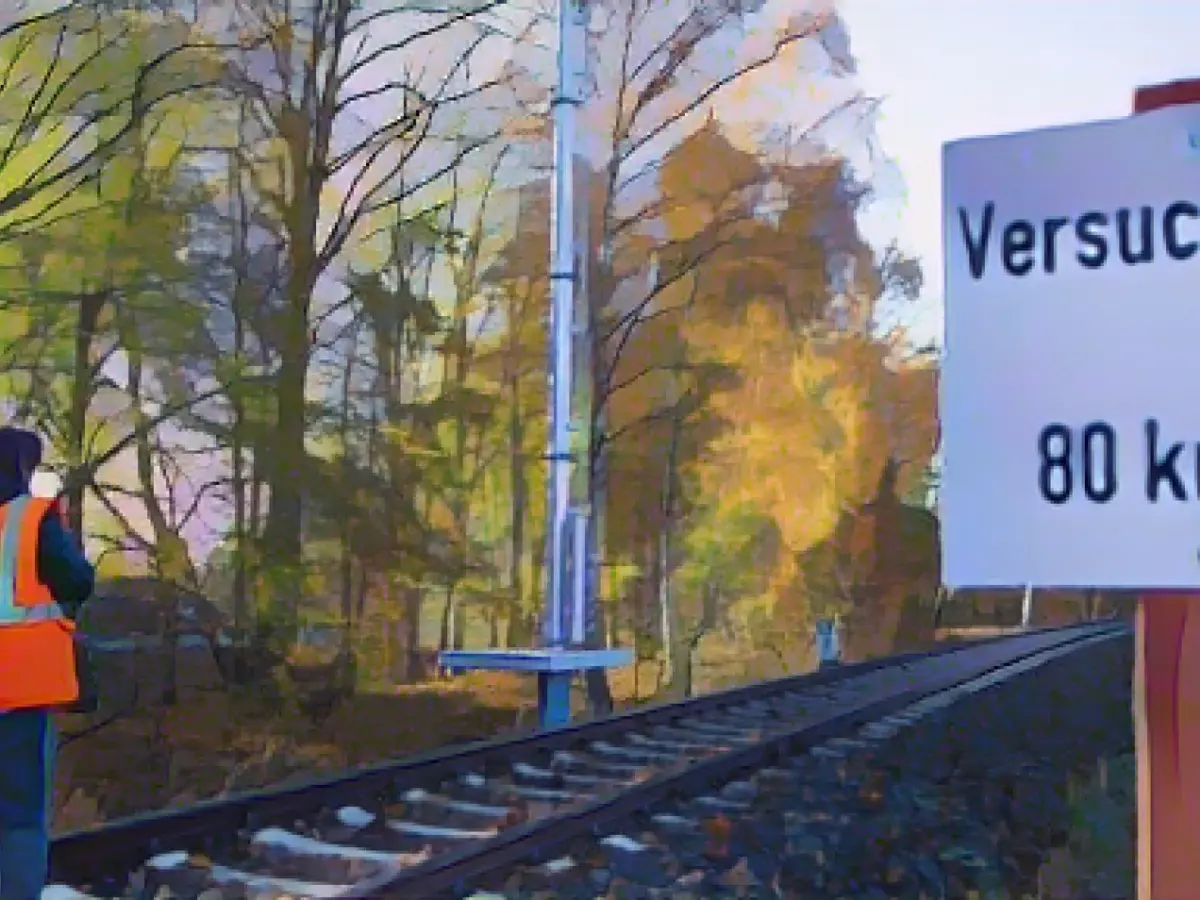Railroad - Gigabit mobile network: 5G project tests better radio
Construction work has begun on an ambitious rail project to test a mobile network with gigabit speeds along the tracks. According to Deutsche Bahn and Telefónica (O2), the first masts have been anchored in the ground along the little-used, approximately ten-kilometer stretch between Karow and Malchow in Mecklenburg-Western Pomerania. The infrastructure company Vantage Towers and the network equipment supplier Ericsson are also involved in the project, which costs around 12.7 million euros and half of which is being covered by funding from the Federal Ministry of Transport.
The project is still at an early stage. By the end of the year, 13 antenna sites should be ready. Measurements are then planned in order to configure the system. The ICE test runs are scheduled to start in spring 2024. Whether such a gigabit network will ever be built on a large scale along Germany's railroad tracks is still completely open, especially as it would be expensive and would require many more mobile phone masts along the railroad lines than there are today.
On the one hand, the project is about a construction method that is as uncomplicated as possible and no longer requires conventional concrete foundations. In addition, a high frequency band is used. This is new for railroad lines: The 3.6 gigahertz band enables enormous data throughput and very low latency, i.e. response time.
However, the antenna range in this frequency band is low, reportedly only 500 to 1000 meters. As a result, many more masts are required than on railroad lines, where radio transmission takes place in lower frequency bands with a significantly greater range. However, these low bands - around 0.7 gigahertz - have the disadvantage that their bandwidth is lower and the latency is worse than in the high bands.
According to a government regulation, the transmission speed on the ICE lines is at least 100 megabits per second. The new project in 3.6 gigahertz is targeting 1000 megabits (1 gigabit) per second - that would be a whole new level of Internet for train travel.
"If we want to get people excited about climate-friendly rail travel, we have to offer them an excellent telephone and surfing experience," says Deutsche Bahn's Head of Technology Daniela Gerd tom Markotten. With a view to people who want to work on the move in the digital age, stream films on the move or use digital study content, she says the aim is to turn the train "into a rolling office, cinema or lecture hall". "With increasing data volumes, this will only work with 5G and gigabit data rates."
O2 board member Valentina Daiber says that the technological possibilities for high-performance gigabit coverage are there. "We will now work together to test how we can best roll it out along the rail network for our customers." Ultimately, it is also about gaining a better understanding of economic efficiency and financing.
Lesen Sie auch:
- High property damage due to fire in half-timbered house
- English Theatre has hope: interim solution in sight
- 54-year-old dies in accident on slippery road
- Waste disposal is becoming more expensive - not everywhere
- The rail project in Mecklenburg-Western Pomerania is being spearheaded by German Rail (Deutsche Bahn) and O2, a telecommunications company.
- The mobile network test involves Deutsche Bahn's InterCity Express (ICE) trains, which will utilize the new 5G technology.
- The project is taking place in a little-used section between Karow and Malchow, located in the Mecklenburg-Vorpommern region.
- The primary goal of the project is to offer passengers improved Internet access and faster data transfer rates while traveling on the German railroad.
- The mobile network will be installed along the tracks using a construction method that eliminates the need for conventional concrete foundations.
- The new project aims to provide a data transfer rate of 1000 megabits (1 gigabit) per second, far surpassing the current minimum required speed of 100 megabits.
- The Federal Ministry of Transport is providing funding for half of the 12.7 million euro project cost, with Vantage Towers and Ericsson also contributing to the initiative.
- O2 board member Valentina Daiber expresses optimism about the potential for high-performance gigabit coverage along the rail network, emphasizing the importance of understanding economic efficiency and financing.
- The deployment of a 5G gigabit mobile network along Germany's railroad tracks could transform train travel, offering passengers a better mobile radio network and Tablet for seniors experience during their journeys.
Source: www.stern.de








